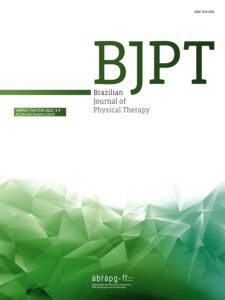Publications

Muscle mechanical properties of pelvic floor and paravertebral muscles in women with and without urge urinary incontinence: a case-control study
Authors: Maria Teresa Garzon-Alfaro 1, Ines Cruz-Medel 1, Sandra Alcaraz-Clariana 1, Lourdes Garcia-Luque 1, Cristina Carmona-Perez 1, Juan Luis Garrido-Castro 2, 3, Francisco Alburquerque-Sendin 1, 2, Daiana Priscila Rodrigues-de-Souza 1, 2
Affiliations:
- Department of Nursing, Pharmacology and Physical Therapy, Faculty of Medicine and Nursing, University of Cordoba, Cordoba, Spain
- Maimonides Biomedical Research Institute of Cordoba (IMIBIC), Cordoba, Spain
- Department of Computer Science and Numerical Analysis, Rabanales Campus, University of Cordoba, Cordoba, Spain
Journal: Brazilian Journal of Physical Therapy - September 2024, Volume 28, Issue 5, Article no. 101114 (DOI: 10.1016/j.bjpt.2024.101114)
-
Field & Applications:
- Medical
- Musculoskeletal disorder
- Women's health
Background: Muscle mechanical properties (MMPs) are relevant in the pathophysiology of lumbopelvic disorders. However, they have not been described in the pelvic floor muscles (PFM) and lumbar paravertebral muscles (LPM) of women with urge urinary incontinence (UUI).
Objective: To identify differences between MMPs of PFM and LPM in patients with UUI and healthy controls. Secondarily also aimed to observe the relationship between sociodemographic and clinical variables with the PFM and LPM MMPs.
Methods: The participants of this case-control study comprised 34 women with UUI (UUI group) and 34 continent women (control group). Sociodemographic variables were obtained together with data on the clinical status of the pelvic floor. The MMPs, i.e., frequency (tone), stiffness, decrement (inverse of elasticity), and viscoelastic properties (VP), such as relaxation time and creep, of PFM and LPM were assessed with a hand-held tonometer. Between-group differences and intra-group correlations were identified.
Results: The UUI group presented higher frequency and stiffness, as well as lower relaxation time in PFM, whereas the LPM had lower tone and stiffness, and higher VP, compared to the control group (p < 0.05). The UUI group showed a pattern of moderate correlations (|0.403|<r<|0.600|) among all MMPs of PFM and tone, stiffness, and VP of LPM, which did not appear in the control group.
Conclusion: The presence of UUI may influence MMPs at PFM and LPM levels, increasing the tone and stiffness of PFM, whereas these properties are reduced in LPM. These findings emphasize the clinical interest of the lumbopelvic determination of MMPs, obtained through externally applied hand-held instruments, in the pathophysiology of UUI.
Keywords: pelvic floor disorders, regional interdependence, tonometry
The study revealed that the presence of UUI may influence MMPs at PFM and LPM levels. Women with UUI have greater tone and stiffness as well as shorter relaxation time in PFM, whereas the LPM exhibited less tone and stiffness, and greater VP compared to women without UUI. The MMPs of women with UUI showed a homogeneous pattern of correlations, with MMPs of PFM being related with BMI, and with lumbar MMPs. The study highlights the clinical relevance of these associations and the need to consider both physical and clinical factors in managing UUI. These findings provide insights into the interconnected pathophysiology of UUI and other related musculoskeletal conditions. Finally, the determination of MMPs by externally applied hand-held instruments is clinically useful in the lumbopelvic region.


